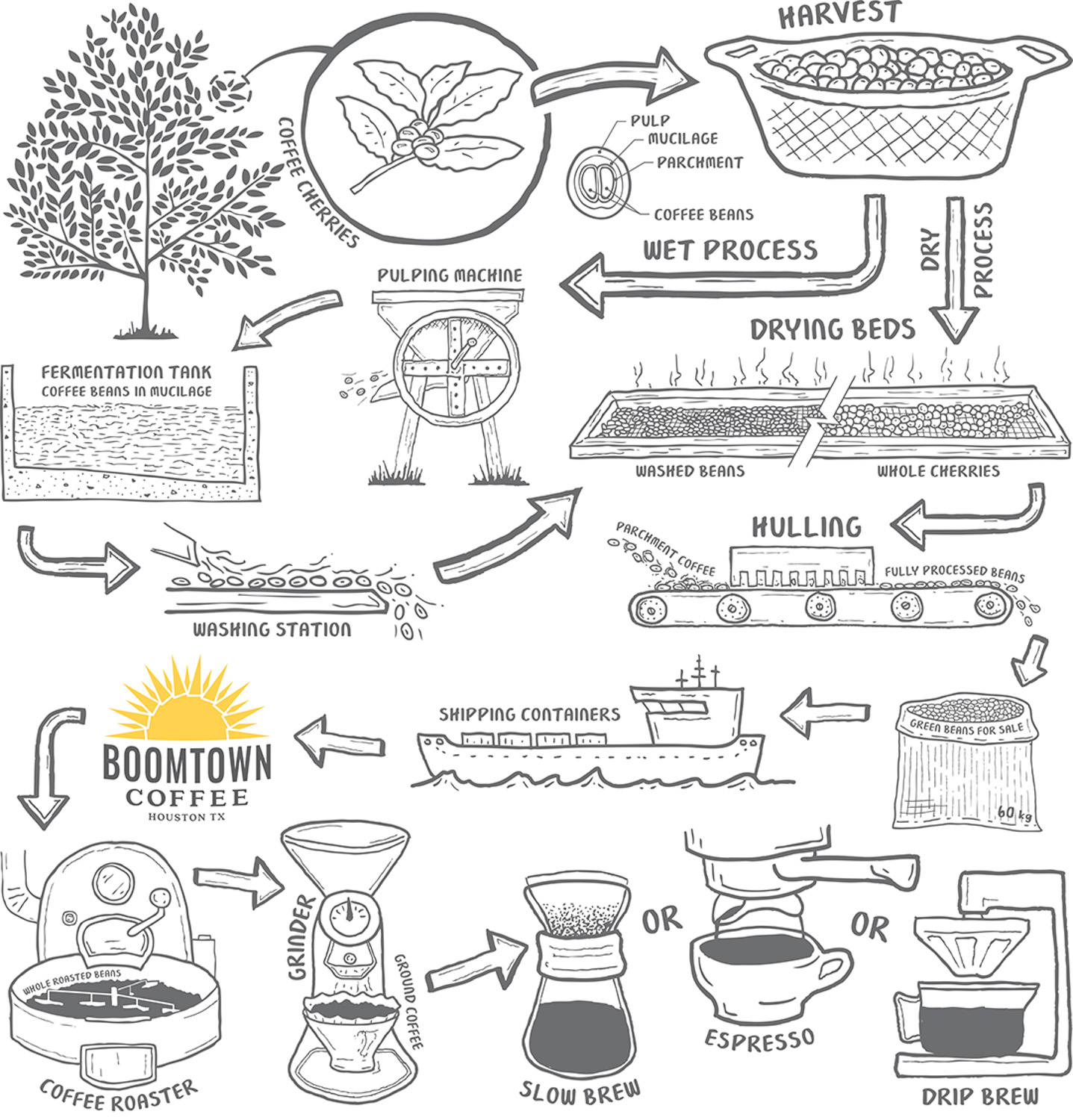What is Green Coffee (and what does Boomtown do with it)?
If you’ve ever been to Boomtown, there’s a chance you’ve seen this graphic:
Boomtown is way down there in the bottom third. Coffee touches many hands before it gets to Houston. If you’ve only experienced our coffee shops, you might not know that we’re also a coffee roaster —> so, what exactly does a coffee roaster do?
Here’s what coffee looks like when it gets to our roastery:
Doesn’t look like coffee, huh? Coffee beans (despite the name) aren’t really beans—they’re actually seeds of a cherry-like fruit. You can’t really brew a cup of coffee with this stuff (and, if you tried, I don’t think it would taste very good).
A sack of green coffee in our roastery
It doesn’t really smell like “coffee” at all—it’s a bit grassy. If it’s a naturally processed coffee it might have a deep prune-y or dried cranberry smell to it. A lot of the aroma and flavor of coffee that we know and love comes from the roasting process.
This is our trusty red coffee roaster. She’s not super big —> she can roast about 19 pounds of coffee at a time, and each batch takes about 10-12 minutes. For our hottest roast profiles, the drum temperature can get up to 500 degrees.
A closeup of the roaster’s sightglass
Roasting really transforms the coffee. The things most coffee-people cite are caramelization and the Maillard Reaction — the same reaction between sugar and amino acids that causes the browning of steak, garlic, and toast. These turn those originally vegetal, raw flavors into the sweet sugar browning, roasted nuts, and cooked fruit that you might enjoy in your favorite coffee.
That looks a bit more palatable, huh? This stuff gets sent off to the awesome baristas at our shops and our wholesale partners to make your favorite latte, drip coffee, or cold brew.
And that’s where Boomtown and other coffee roasters fits in the journey from seed to cup!






